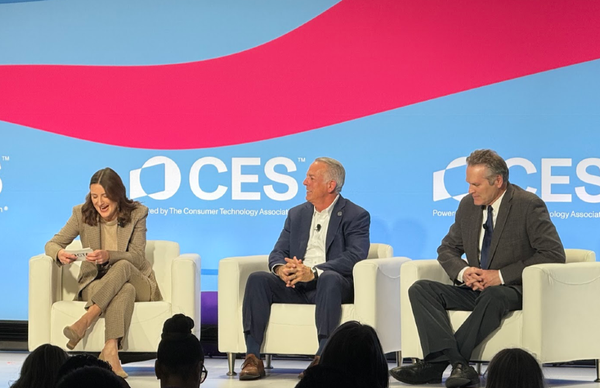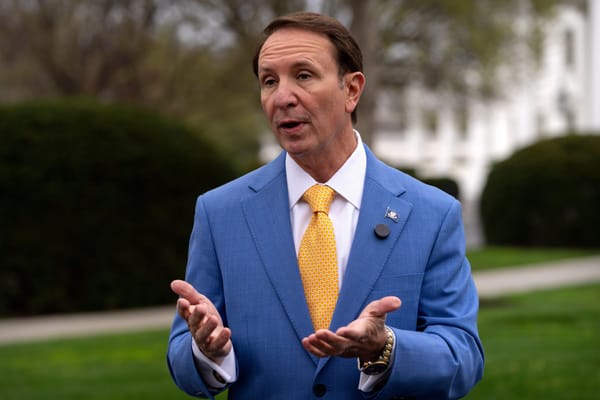From Plans to Progress: Using BEAD to Bridge the Digital Divide
The lack of a skilled workforce needed to build, maintain and operate the networks is a major challenge that could lead to delays.
Dave Stehlin

Since its launch, the unprecedented $42.5 billion Broadband Equity, Access, and Development program has made significant strides in its mission to bring reliable high-speed Internet service to all Americans in every state, the District of Columbia and five territories.
To date every eligible state and territory has successfully developed and submitted their initial proposals, which consists of two separate volumes. So far, all have received National Telecommunications and Information Administration’s, the department administering the program, approval of Volume 1, which details existing broadband funding, unserved and underserved locations, community anchor institutions and the challenge process through which certain entities can dispute the eligibility status of various locations.
As of July 2024, a total of 23 states and territories have secured NTIA approval for Volume 2, which includes the remaining initial proposal requirements. NTIA expects to complete all Volume 2 approvals by the end of 2024.
Upon approval of an initial proposal, NTIA makes 20 percent of the allocated funds available, giving states and territories the green light to begin the challenge process of confirming locations and institutions eligible for BEAD funding. This is a critical step to ensure accurate state broadband maps that direct funding towards truly unserved or underserved locations.
No later than one year after initial proposal approval, all eligible states and territories must file their final proposals, which will detail the outcome of their BEAD subgrantee selection process and how they will ensure it delivers connectivity to all unserved and underserved locations. Upon final proposal approval, NTIA will distribute the remaining 80 percent of allocated BEAD funds.
A complex road ahead
While some shovel-ready projects could start in the first half of 2025, Blair Levin, a renowned policy analyst, says that most BEAD-funded networks likely won't be operational until 2026 to 2028.
"Having the BEAD program run by the states and requiring them to provide plans that will connect 100% of locations adds orders of magnitude of complexity to the task," said Levin. "One of the biggest delays has been caused by not having an accurate map of broadband access."
The lack of a skilled workforce needed to build, maintain and operate the networks is another major challenge that could lead to delays. Even though many states and territories will have non-deployment funds available to cover workforce development costs, there are just not enough workers to fill the required jobs to build out our nation’s communications networks.
There isn’t one single factor contributing to the worker shortage issue. I like to refer to it as a triple threat which includes: the influx of this government funding to achieve 100% connectivity; an aging workforce; and new bandwidth-intensive applications requiring the evolution of existing networks – all creating the immediate need for a massive workforce.
"It doesn't matter if the source of funds comes from the government, private sector, or a combination thereof," says Levin. "Building a network is building a network, and you need a workforce to do it."
Let’s discuss each of these issues and what we can collectively do to address them. Most State Broadband Offices have been laser-focused on securing the necessary NTIA approvals and only have so many areas they can prioritize with the limited resources they have available. Even though they are receiving funding to hire the workforce to upgrade networks, there are not enough tools and resources in place to promote, advertise and fill these available positions. We need to do a better job as an industry of working with state offices to bring awareness of the training and resources that are available to help fill these positions.
As career telecom employees increasingly leave the workforce for retirement, it creates a significant void in workers who are qualified and trained to fill these positions. There is also a false perception, that the jobs required to build out these networks are low-paying, non-career oriented positions. In fact, with relatively minimal yet quality training, workers can enter salaried positions making $60,000 a year as a broadband technician and can pursue a long-lasting career with ample opportunity for growth. Again, the industry has to do a much better job of attracting, training and delivering a new generation of workers.
But it's more than just technicians that will be needed to build and deploy these networks, which are increasingly evolving and becoming more complex. Many of these upgraded networks will be built in rural and underserved communities. There will be a need for network engineers, planners, customer service representatives and other local telecom professionals to help manage and maintain these next-generation networks once they have been built. That means that there is an opportunity to improve the quality of life and economic development by bringing well-paying jobs to these rural areas. But again, this will possible only if we have the workers to fill these positions.
This triple threat has given rise to a variety of programs like Broadband Nation, which was developed and managed by TIA and Questex to attract, train and deliver broadband talent across the country. TIA is committed to working with local, state and federal government along with academia to ensure that we collectively resolve the workforce shortage issue.
Confidence in connectivity
While navigating the complexities of establishing or expanding state broadband offices to manage the BEAD program and grappling with the challenges of mapping, outdated infrastructure, and ongoing workforce shortages, states are forging ahead—despite funding dollars likely to flow later than expected and some critics having the view that the rules discourage participation. Levin expresses unwavering confidence in the program's ability to achieve its goal: universal connectivity.
"I am ultimately confident that there will be no shortage of providers—both big and small—competing for the money, and at the end of the day, we will connect everybody," he says.
With one of the most contentious, high-stakes presidential elections just around the corner, many wonder what will happen with the BEAD program should there be a change in administrations. While there have been delays and challenges in having the states responsible for implementing BEAD, Levin says that's ultimately a good thing.
"With the states running the program, I don't anticipate any disruption in the program, regardless of what happens in November," he says. "NTIA is on the verge of distributing funds, much of which is going to heavily Republican states. I don't see a slowing down in the distribution of funds to build the networks if there's a change in administrations."
Dave Stehlin has served as CEO of TIA since 2019, and has more than 30 years of experience leading the development and implementation of key business and technology strategies in the telecommunications industry. Prior to TIA, Dave has held various leadership roles in public and private companies including CEO of MRV Communications (MRVC) and CEO of Ceterus Networks as well as President of Overture Networks. Before starting his career in the ICT industry, Dave was a Captain in the U.S. Marine Corps. This Expert Opinion is exclusive to Broadband Breakfast.
Broadband Breakfast accepts commentary from informed observers of the broadband scene. Please send pieces to commentary@breakfast.media. The views expressed in Expert Opinion pieces do not necessarily reflect the views of Broadband Breakfast and Breakfast Media LLC.












Member discussion